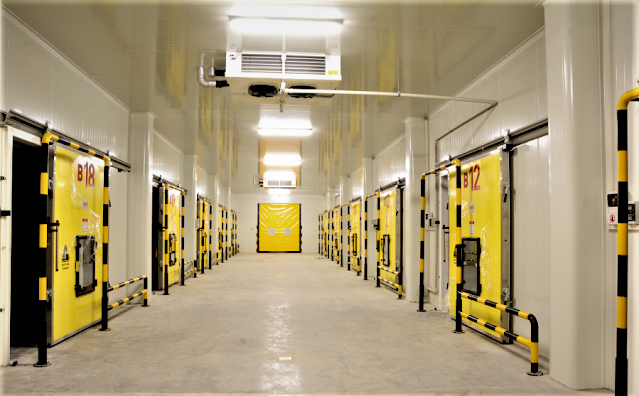Understanding the Basics of Controlled Atmosphere Systems
Introduction
Controlled Atmosphere Systems have revolutionized the way we store, preserve and enhance the quality of agricultural products, particularly perishable items. This technology has significantly extended the shelf life of fresh produce, thereby reducing food waste and ensuring food security. But what exactly are Controlled Atmosphere Systems, and how do they work? This article will delve into the basics of this transformative technology, its applications, benefits, and future prospects.
Delving into the world of Controlled Atmosphere Systems (CAS), it's essential to grasp the basics to appreciate their true value. These innovative systems, designed to regulate and maintain specific environmental conditions, primarily temperature, humidity, and gaseous composition, are an integral part of numerous industries worldwide.
In essence, CAS are like a meticulous custodian, carefully managing the atmosphere within a confined space. The key to their effectiveness lies in their precision and control, adjusting the conditions to meet the specific requirements of the substances housed within. This could range from preserving the freshness of fruits and vegetables during storage and transport, to ensuring the optimal conditions in scientific labs and even facilitating certain manufacturing processes.
The beauty of CAS is in their adaptability. They can be tailored to suit various applications, providing consistent and reliable results. This is why they are increasingly being adopted in sectors like agriculture, food storage, medical research, and aerospace, among others.
Understanding the basics of Controlled Atmosphere Systems opens up a world of possibilities in improving efficiency, quality, and safety in a range of industries. It's an intriguing blend of science and technology that is continually evolving, offering exciting prospects for the future.
Understanding Controlled Atmosphere Systems
Controlled Atmosphere Systems, often used synonymously with Controlled Atmosphere Storage and Modified Atmosphere Packaging, are technological solutions that manipulate the atmospheric composition around stored agricultural products to prolong their freshness and quality. This is achieved by reducing the oxygen level and increasing the carbon dioxide level, thereby slowing down the respiration and ripening processes of the stored products.
Components of a Controlled Atmosphere System
A typical Controlled Atmosphere System consists of a sealed storage structure, gas analyzers and sensors, gas injection systems, and a control unit. The system closely monitors and adjusts the atmosphere's composition inside the storage, ensuring optimal conditions for preserving the quality of stored products.
The Science Behind Controlled Atmosphere Systems
The science behind Controlled Atmosphere Systems is rooted in the physiology of fruits and vegetables. When harvested, these products continue to 'breathe' or respire, consuming oxygen and releasing carbon dioxide. This respiration process triggers the ripening and eventual decay of the products. By manipulating the oxygen and carbon dioxide levels, Controlled Atmosphere Systems slow down respiration and ripening, extending the product's shelf life.
Applications of Controlled Atmosphere Systems
Controlled Atmosphere Systems are widely used in the storage and transportation of perishable agricultural products, such as fruits, vegetables, and flowers. Additionally, they are also employed in Modified Atmosphere Packaging, where the internal atmosphere of the packaging is altered to maintain the freshness of the packaged products.
Benefits of Controlled Atmosphere Systems
Controlled Atmosphere Technology offers several benefits. It significantly extends the shelf life of agricultural products, reducing food waste. It also maintains the quality and nutritional value of stored products, ensuring their marketability even after prolonged storage. Moreover, it enables the transportation of perishable products over long distances, thereby promoting trade and market expansion.
Future Prospects of Controlled Atmosphere Systems
With the increasing demand for fresh produce and the rising concerns over food security, the future prospects of Controlled Atmosphere Systems are promising. Advances in sensor technology, automation, and AI are expected to further enhance the efficiency and effectiveness of these systems.
Conclusion
Controlled Atmosphere Systems have become an indispensable tool in the postharvest treatment of agricultural products. By understanding the basics of this technology, we can better appreciate its role in preserving food quality, reducing waste, and ensuring food security. As technology continues to evolve, we can expect even more innovative and efficient applications of Controlled Atmosphere Systems in the future.





0 comments
Note: only a member of this blog may post a comment.